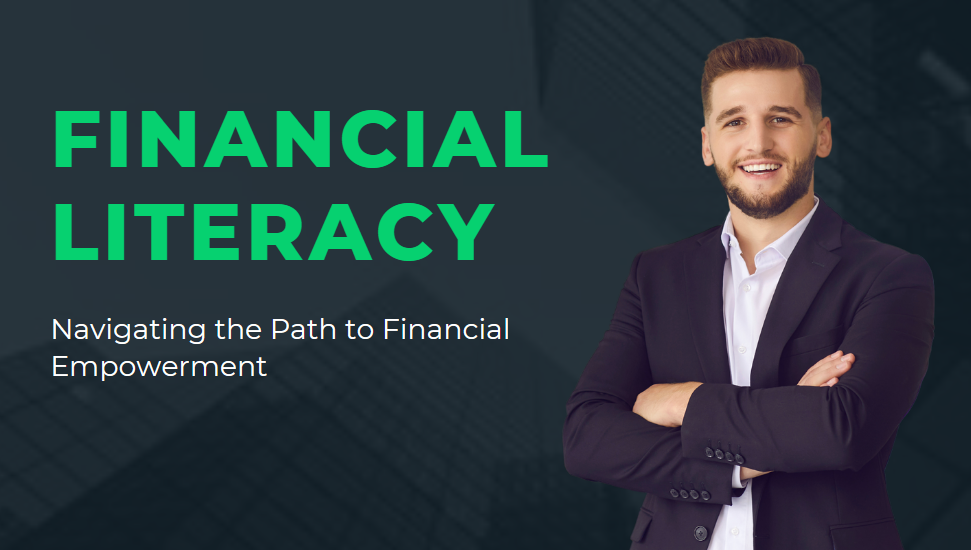Table of Contents
Introduction
In a rapidly evolving financial landscape, the term “financial literacy” has become more than just a buzzword. It’s a crucial skill that empowers individuals to make informed financial decisions, ultimately leading to financial well-being. As we navigate the complexities of income, debt, investments, and taxes, the need for a comprehensive understanding of financial literacy has never been more apparent.
The Basics of Financial Literacy
Understanding financial literacy begins with grasping the basics. This includes gaining insights into income sources, whether through employment, investments, or other avenues. Equally important is the ability to create and adhere to a budget, ensuring financial stability and responsible spending habits.
Banking and Financial Institutions
Choosing the right financial institution can significantly impact one’s financial journey. From selecting an appropriate bank to understanding the nuances of different types of accounts, this section explores the foundations of effective banking.

Credit and Debt Management
A key aspect of financial literacy is managing credit and debt responsibly. Delving into the significance of credit scores and providing strategies for debt repayment, this section aims to equip readers with tools for a healthy financial life.
Investments and Savings
Building wealth requires a thoughtful approach to investments and savings. Readers will gain insights into various investment options and learn how to establish a robust savings plan for long-term financial security.
Understanding Taxes
Navigating the intricacies of taxes is an integral part of financial literacy. From effective tax planning to common mistakes to avoid, this section provides valuable information for optimizing one’s financial position.
Real-life Applications
Bringing financial literacy into real-life scenarios, this section explores its practical applications. Through case studies and success stories, readers can connect theoretical knowledge to tangible outcomes.

The Role of Education
Recognizing the importance of education in fostering financial literacy, this section discusses the integration of financial education into school curricula and emphasizes the need for continuous learning throughout adulthood.
Digital Financial Literacy
As our financial world becomes increasingly digital, this section addresses the challenges and opportunities associated with navigating online platforms. It also sheds light on security and privacy concerns.
Overcoming Common Challenges
This section focuses on addressing challenges such as economic disparities and barriers to financial literacy. By understanding and overcoming these challenges, individuals can better navigate their financial journeys.
Future Trends in Financial Literacy
Examining emerging technologies and evolving economic landscapes, this section provides a glimpse into the future of financial literacy. Staying ahead of trends is crucial for continued financial empowerment.
Government Initiatives
Highlighting the role of public policies, this section explores government initiatives aimed at promoting financial education and creating support systems for vulnerable communities.
Empowering Future Generations
Ensuring the next generation is financially savvy involves teaching kids about money and building generational wealth. This section offers insights into effective strategies for empowering future generations.
The Global Perspective
Financial literacy extends beyond borders. This section explores its global significance, considering cross-cultural challenges and potential solutions on an international scale.
Conclusion
In conclusion, achieving financial literacy is not a destination but a continuous journey. This article has covered key aspects, from the basics to real-life applications, and emphasized the importance of education, both in schools and throughout adulthood. As we navigate the digital age and anticipate future trends, financial literacy remains a cornerstone for individual and collective financial well-being.
Frequently Asked Questions (FAQs)
-
Is financial literacy only relevant for adults?
- Financial literacy is important for individuals of all ages. Starting early can build a strong foundation for a lifetime of informed financial decisions.
-
How can I improve my credit score?
- Strategies for improving credit scores include timely bill payments, reducing debt, and monitoring credit reports for errors.
-
Are there global standards for financial literacy?
- While there’s no universal standard, many countries have developed frameworks and initiatives to promote financial literacy.
-
What role do schools play in teaching financial literacy?
- Schools play a crucial role in introducing financial concepts, but ongoing education and practical application are equally important.
-
How can I stay informed about emerging trends in financial literacy?
- Keeping up with reputable financial news sources, attending workshops, and participating in online forums are effective ways to stay informed.
Related Post:
Finances Aesthetic


